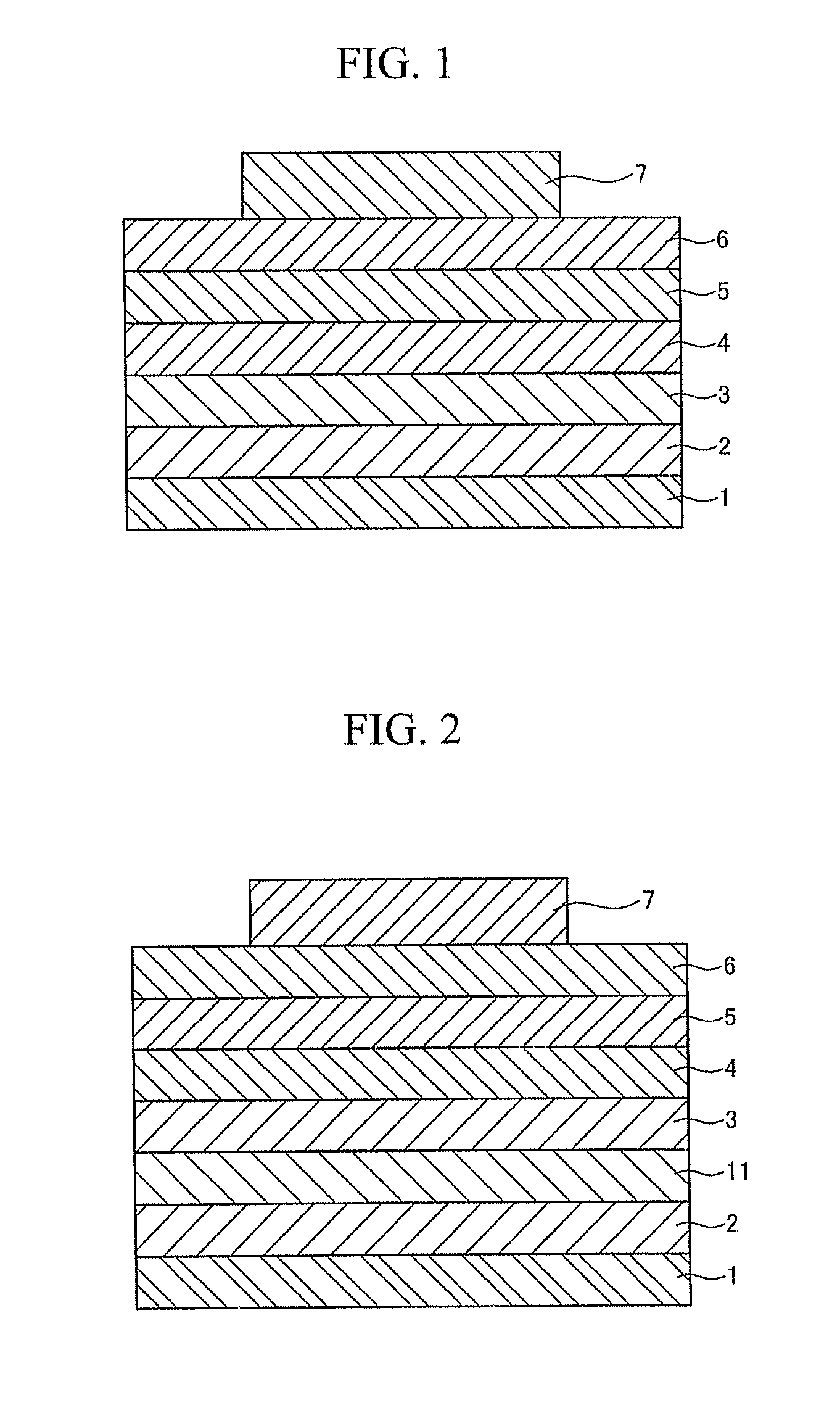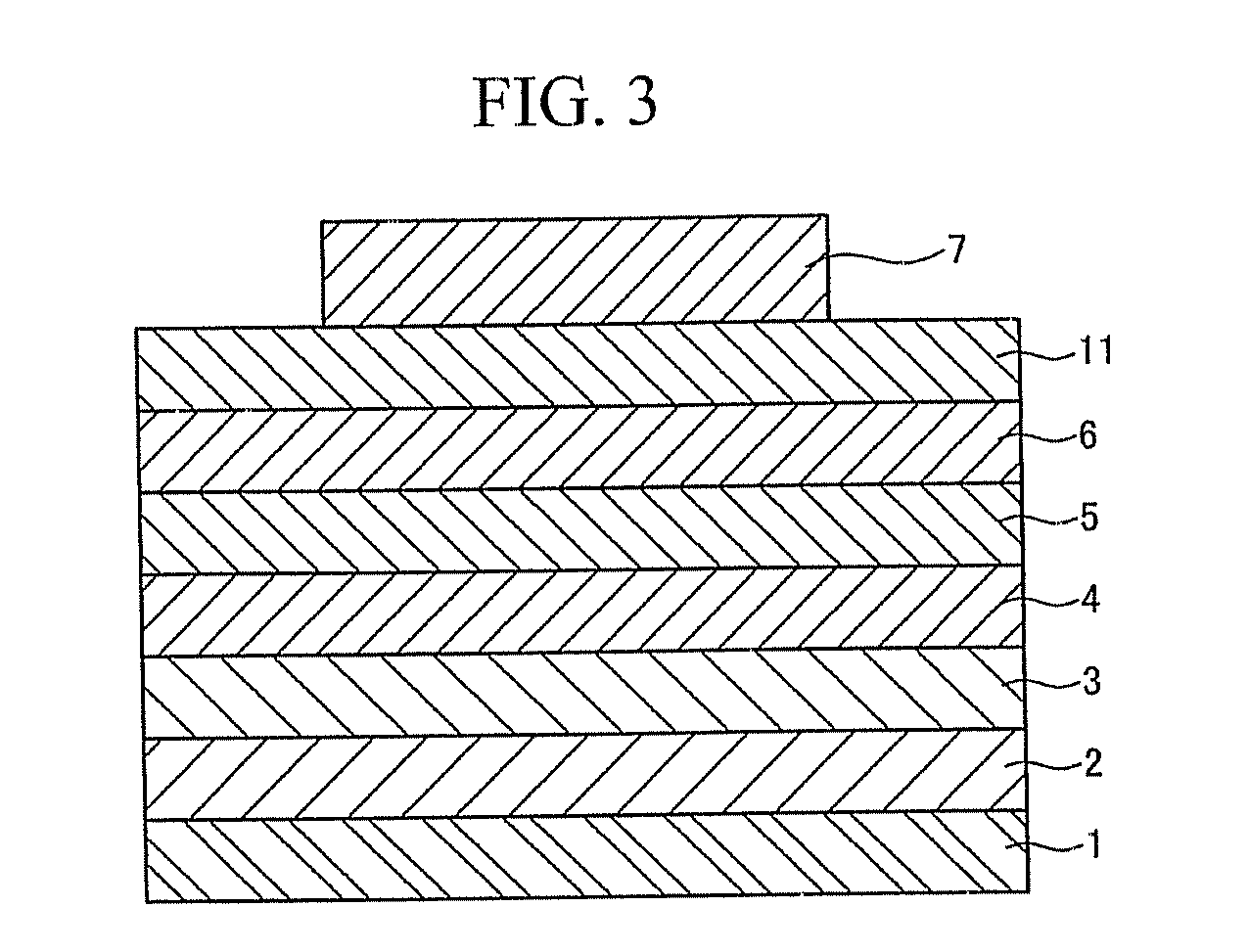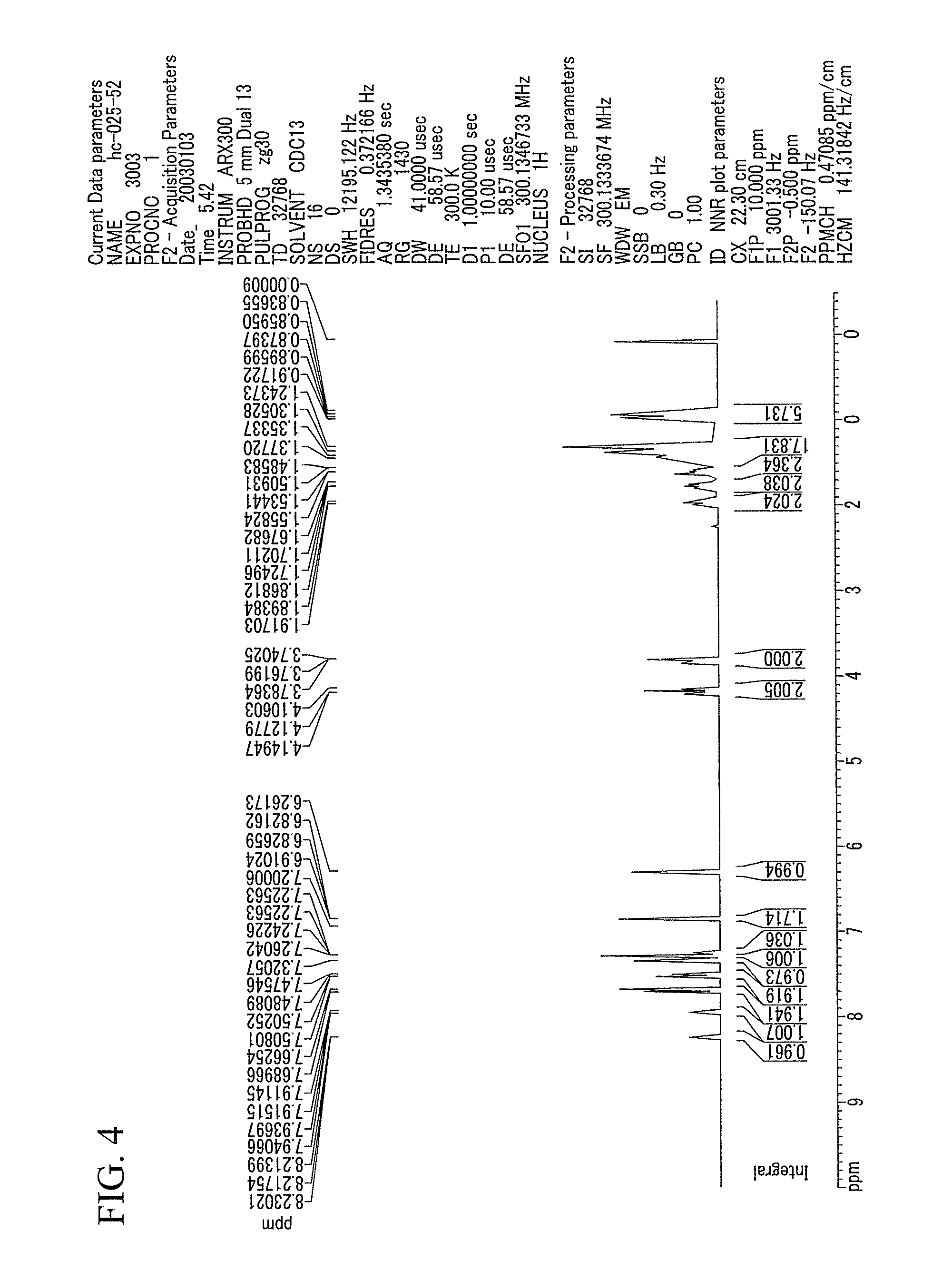Spiro-compound for electroluminescent display device and electroluminescent display device comprising the same
a display device and electroluminescent technology, applied in the direction of solid-state devices, discharge tubes/lamp details, natural mineral layered products, etc., can solve the problems of electroluminescence diodes having difficulties in application to large-area electroluminescence display devices, response time, contrast, and viewing angle, and achieve excellent light emitting characteristics
- Summary
- Abstract
- Description
- Claims
- Application Information
AI Technical Summary
Problems solved by technology
Method used
Image
Examples
example 1
Synthesis of Dibromo Compound 7
[0091] A dibromo compound 7 was synthesized according to the following Reaction Scheme 1.
[0092] 19 g of catechol was dissolved in 200 ml of acetonitrile, and then, 2.5 eq of 1-bromooctane, 2.5 eq of K2CO3, and 0.1 eq of KI were added thereto. The resulting mixture was heated and refluxed for 24 hours.
[0093] When the reaction was complete, the reactant was filtered to get an organic layer. Then, the filtered organic layer was concentrated under a reduced pressure. Then, the residue gained from the reduced pressure concentration was dissolved in 200 ml of ethylether. The gained organic layer was washed with 100 ml of water and salt-saturated water, so that it could be clearly separated. Then, it was dehydrated with 20 g of MgSO4, and the remaining solution was concentrated under a reduced pressure, gaining 57.17 g of a white-solid compound 1 (yield=99%). The compound 1 was examined regarding its structure through a 1H-NMR.
(ii) Preparation of 4-bromo...
example 2
Preparation of a Dibromo Compound 11
[0108] A dibromo compound 11 was synthesized according to the following Reaction Scheme 2.
[0109] 39.13 g of a compound 4 of Example 1 and 39.13 g of 3-bromothiophene were dissolved in 300 ml of a mixed solution of DME and H2O, which was prepared in a ratio of 1.5:1, and then, 0.1 eq of Pd(OAc)2 and 0.1 eq of tris-o-tolyl phosphine were added thereto. In addition, 2.5 eq of K2CO3 was dissolved in 150 ml of a mixed solution of DME and H2O, which was prepared in a ratio of 1.5:1. Then, this solution was added to the former solution in dropwise fashion. The mixture solution was heated and refluxed for a reaction for one hour.
[0110] When the reaction was complete, 300 ml of ethyl acetate and 200 ml of water were added thereto to separate an organic layer. The organic layer was dehydrated with 30 g of MgSO4 and then, filtered. The remaining solution was concentrated under a reduced pressure. A mixture of n-hexane and ethylacetate, which was prepared...
examples 3 to 7
Preparation of Compounds 12 to 16
[0119] Compounds 12 to 16 were respectively prepared according to the following Reaction Scheme 3.
(i) EXAMPLES 3, 5, AND 6
Preparation of Compounds 12, 14, and 15
[0120] Compound 7 of Example 1 was used in a Pd 0-mediated Suzuki Aryl Coupling method according to the Reaction Scheme 3 to synthesize compounds 5 12, 14, and 15.
[0121] For example, a compound 12 was synthesized as follows.
[0122] 4.67 g (6.38 mmol) of a compound 7, 4.08 g (13.4 mmol, 2.1 eq) of 2-(anthracene-9-yl)-4,4,5,5-tetramethyl-1,3,2-dioxaborolane as an anthracene Borate derivative, and 1 mol % (73.7 mg) of Pd(PPh3)4 were dissolved in 30 mL of anhydrous toluene and 30 mL of THF, and thereafter, 16 mL (5 eq) of 2MK2CO3 was added thereto. Then, the mixture solution was reacted at 100° C. for 36 hours. When the reaction was complete, the reaction solution was extracted with water and ethylacetate. Then, the extract was dried and thereafter, recrystallized with diethyl ether and chl...
PUM
| Property | Measurement | Unit |
|---|---|---|
| driving voltage | aaaaa | aaaaa |
| mole ratio | aaaaa | aaaaa |
| mole ratio | aaaaa | aaaaa |
Abstract
Description
Claims
Application Information
 Login to View More
Login to View More - R&D
- Intellectual Property
- Life Sciences
- Materials
- Tech Scout
- Unparalleled Data Quality
- Higher Quality Content
- 60% Fewer Hallucinations
Browse by: Latest US Patents, China's latest patents, Technical Efficacy Thesaurus, Application Domain, Technology Topic, Popular Technical Reports.
© 2025 PatSnap. All rights reserved.Legal|Privacy policy|Modern Slavery Act Transparency Statement|Sitemap|About US| Contact US: help@patsnap.com



